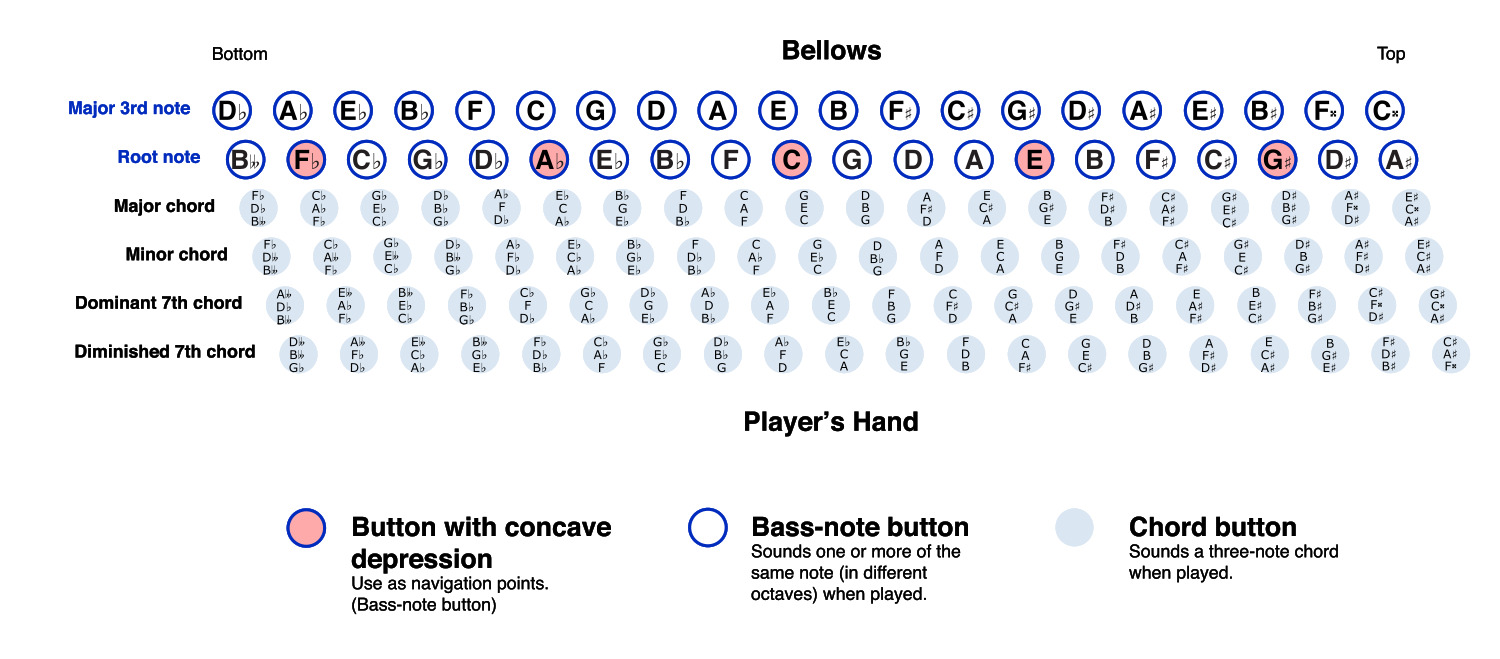Sixth Chords

Above image from https://en.wikipedia.org/wiki/Stradella_bass_system
The Stradella bass accordion can play a lot of chord types, but many are not all that obvious. In this article we will discuss the various “sixth chords”.
One fortunate or unfortunate reality inherent in the Stradella bass system is that we only have one octave to play with. We have a complete set of the 12 notes from A to G# ... but, unlike the treble keyboard, when you hit the top note in the octave (most normally a C, but it can vary) you don't continue on to higher and higher notes. Instead, the system wraps around. Not a bad thing, but it limits the use of fancy inversions (look it up!) you can achive with other keyboard systems (including Free Bass available on many accordions).
So, with only one octave to play with, the “classical” definition of a 6th chord is pretty much lost on Stradella. And that is probably just as well since no one really cares about it. In classical theory a 6th chord is the same as the first inversion of a major chord. Okay, that's out of the way. Who's interested in the classical theory anyway!
Next, we have a standard major chord with an added 6th. In the case of a C major, this would be C, E, G and A (the A being the 6). In written jazz music and leadsheets it is notated as a pitch followed by the numeral 6. So, C6, E6 and Bb6 are all examples of 6th chords. And just to showoff my hard learned jazz theory, if you play the sixth up an octave you now have a 13th. And, yes, you will see this a fair bit in jazz charts ... but, be aware that in jazz a 13th implies the dominate 7th being played as well. Oh my, this jazz stuff is all so complicated, let's leave it for another day.
To play this chord on Stradella:
- Just press the button corresponding with the actual 6th note in addition to the major chord button. The 6th is located in the contra-bass row (closest to the bellows) one column to the left. So, the needed A in a C6 chord is right above the F note. You can get a very nice effect by playing a sequence like Root, Major Chord, 6th, Major Chord. Using E6 as an example, this would be E, EM, C#, EM.
- Alternately, you can create a sixth chord by playing the minor chord on the sixth degree of the scale ... for a C chord it's the C major scale and the sixth is A plus the root C. So, you can play the C as your bass note and add Am. It's a little bit of a reach, but you should be able to get is using your fifth finger on the C and second on the Am.
There are also minor 6th chords and you deal with them the same as major 6ths. Just add the 6th from the contra-bass row and play the minor button instead of major.
Remember: With Stradella bass the pattern always remains the same. You don't need to worry about those nasty white and black keys like you would on a piano!
 |
This page was last modified on 2024-08-16 |